Medical expert of the article
New publications
Poisonous houseplants
Last reviewed: 07.07.2025

All iLive content is medically reviewed or fact checked to ensure as much factual accuracy as possible.
We have strict sourcing guidelines and only link to reputable media sites, academic research institutions and, whenever possible, medically peer reviewed studies. Note that the numbers in parentheses ([1], [2], etc.) are clickable links to these studies.
If you feel that any of our content is inaccurate, out-of-date, or otherwise questionable, please select it and press Ctrl + Enter.
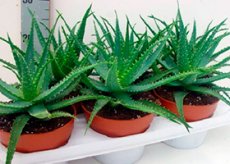
Poisonous houseplants can hide in our homes. It is difficult to imagine a home without flowers. Houseplants play a special role in it - living decorations, surrounded by which we feel comfortable and safe.
They fill the space with their scent, delight us with their shapes and colors. In addition, they create a pleasant microclimate, increase air humidity and enrich our home with oxygen, and some of them even remove toxins from the air. More and more different decorative plants appear in our homes. Our knowledge about them, however, is small. As a rule, we immerse ourselves in the secrets of growing, forgetting that among them there are poisonous houseplants that have a negative effect on our body.
Most of the beautiful plants that live in our homes have a negative impact on our health. Some of them contain substances that are dangerous to humans. Among them, there are plants that are very popular and can be found in almost every home.
Poisonous houseplants that are most common in our homes:
- dieffenbachia;
- spurge;
- croton;
- azalea;
- Alocasia;
- aloe;
- geranium;
- hydrangea;
- dracaena;
- datura;
- cactus;
- oleander;
- peperomia;
- ivy;
- poinsettia;
- boxwood;
- spathiphyllum;
- philodendron;
- cyclamen;
- yucca.
What to do if poisoning or irritation does occur?
As soon as you notice something wrong, immediately call an ambulance or go to the hospital.
Make sure there are no plant remains in the child's mouth. While waiting for an ambulance, you can induce vomiting, give water to rinse the mouth, and activated charcoal.
Do not induce vomiting if the child is unconscious.
Bring the plant your child ate for examination, it will be easier for the doctor to identify the toxin and choose the appropriate treatment method.
If the skin or eyes are irritated by the milky juice, gently rinse the reddened area under running warm water.
Be careful that children do not rub their eyes with their hands or put them in their mouths, as this can spread the irritating juice over a large area.
Let's briefly describe the most common poisonous houseplants:
Dieffenbachia - attracts attention mainly with beautiful carved leaves. It grows in the tropical region, in our climate conditions, it can be grown as a home plant. It, or rather its juice, contains oxalic acid and calcium oxalates.
Dieffenbachia juice tends to cause dermatitis and other skin problems. If it gets into the eyes, a person experiences an attack of acute pain, lacrimation and spasm of the eyelids. Ingestion of any part of the plant can cause nausea, diarrhea, arrhythmia, paralysis.
It has an irritating effect on the vocal cords, which can lead to long-term loss of voice.
Philodendron is a representative of the genus of plants from South and Central America. Contains allergenic substances. When the juice gets on the skin, it causes irritation, and when it gets inside, it causes an attack of pain and burning in the mouth and throat, the mucous membranes swell, and salivation occurs.
Croton. Belongs to the spurge family. All its above-ground and underground parts (stem, leaves and roots) contain liquid that irritates the skin and eyes. If taken orally, it may cause diarrhea and vomiting.
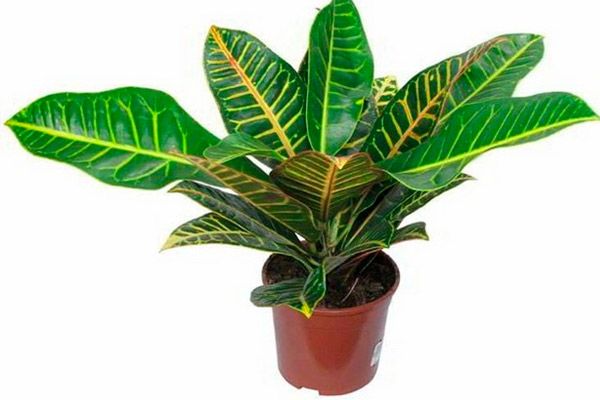
Spathiphyllum. We admire its beautiful leaves, but it is quite a poisonous plant. It contains calcium oxalate, which causes skin and eye irritation. When taken internally, it is a strong irritant to the mucous membranes of the mouth and gastrointestinal tract, as well as swelling of the respiratory tract.
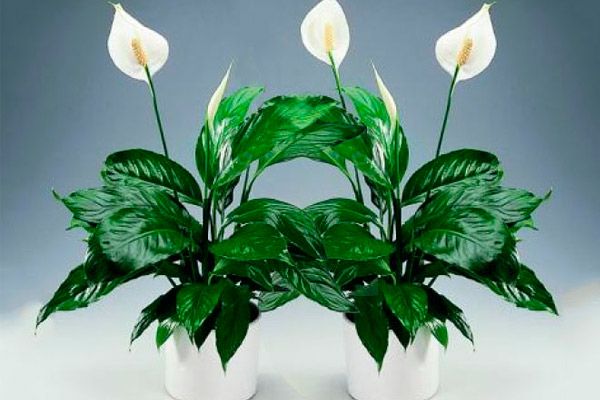
What should you do if your pet has been poisoned by poisonous houseplants for cats?
If your pet has one or more of the symptoms listed above, it is likely that it has eaten a plant containing toxic substances. Such poisoning is very dangerous, and you should seek immediate veterinary help. Try to determine the source that caused the cat's poisoning and take a sample of the plant eaten by your pet when you visit the veterinarian. This information will allow you to diagnose and prescribe adequate treatment for your pet faster.
This article describes only some poisonous houseplants that can pose a threat to your health and the environment. But it does not in any way encourage you to completely get rid of decorative poisonous houseplants or not to buy them because they can be dangerous. It is necessary to follow the rules for caring for them and placing them. In fact, every day we deal with chemicals that are much more harmful than the described samples. When caring for such plants, it is better to use gloves. Wash your hands thoroughly with soap after contact with the liquid secreted by the plant. If there are small children and animals in the house, you can put the pots in hard-to-reach places. Older children should know that they cannot chew houseplants, their fruits, and flowers that grow in containers or pots. It is better to take fruits from the refrigerator in the kitchen or from a special vase on the table. By following simple rules, your favorite houseplants will delight the eye for a long time without harm to health.
Poisonous Houseplants for Humans
These are the potted plants that are often called "toxic". The term is rather vague, because many (and perhaps almost all) household potted plants are more or less potentially dangerous to health if consumed in large quantities! But who would eat a dozen bitter leaves?
We cannot ignore the danger, especially if there are children and animals around us. First of all, we care about the health of our children. The sooner you identify plants that contain real poisons (for example, some alkaloids, saponins and glycosides), irritating the skin and eyes (milky juice), the sooner you can make your life and those around you more comfortable and protected.
Eating parts of the leaves or flower petals may cause nausea or stomach upset. Fortunately, it is rare for children to eat large amounts of leaves or flowers because the plants are very bitter (this is how plants can protect themselves from being eaten by herbivores in their natural environment).
In people who are allergic to toxins, this causes swelling of the airways and severe difficulty breathing! Others experience seizures, rapid heartbeat, and coma.
Milk (comes from damaged parts of the plant) causes irritation (redness, burning, swelling) of the skin, eyes, and when swallowed, irritation of the mouth and gastrointestinal tract.
Interestingly, some of the poisons are used in small doses to make medicines.
Let's take a closer look at children's safety. Children are curious, they want to touch and try everything, most of them will be happy to learn about the world around them in accordance with the saying "try everything with your teeth" - this is quite natural. Of course, parents should ensure the safety of their little ones!
Poisonous houseplants should be placed high up, away from children's hands and prying eyes. When the time comes, growing a living garden on a windowsill can be a lot of fun. Until the children are older, keep the plants high up on a cabinet or on special hanging plants. If possible, find them a new home - you'll probably find someone who will appreciate such a gift.
Pay attention to sharp spines of yucca, aloe, agave or cactus. These plants should also be placed so that children cannot reach them.
Explain to your child that plants can be dangerous and teach them not to play near them.
For your personal safety, wear gloves when working with poisonous houseplants. Handle plants carefully to avoid damaging their stems and leaves. When replanting or treating such plants, avoid touching your eyes, nose, or mouth. After handling them, wash your hands thoroughly with soap and water.
The most poisonous indoor plants
Ivy is a native of Latin America. It grows very quickly and does not require much time for care, and in addition, its decorative qualities and long life are highly valued. Ivy leaves can be star-shaped, large, small, variegated (green and white or cream). It can grow upward or hang freely. Ivy juice contains toxic saponins, which irritate the skin and conjunctiva of the eyes. If a piece of the plant is accidentally swallowed, it can negatively affect the respiratory system, fever, rash, hallucinations, lethargy and vomiting.
Despite the fact that ivy is one of the most poisonous houseplants, syrups are made from its leaves, which are used as an aid in the fight against upper respiratory infections.
Medicine is aware of the various beneficial properties of stems and leaves, which have antibacterial, anti-inflammatory, hemostatic, wound-healing, antifungal, expectorant, antispasmodic and diuretic effects.
There are several medicinal forms of ivy: freshly squeezed juice, alcohol tincture. Fresh leaves, processed in a special way, are used in ointments, balms.
Persian cyclamen. Belongs to the primrose family. There are about 16 species of cyclamen. Homeland - the Mediterranean. Cyclamen in a pot usually grows from 15 to 40 cm in width and height, together with flowers. Cyclamen blooms from autumn to spring. Most varieties experience a dormant period in the summer, so when the plant withers, do not rush to throw it away. Cyclamen is a perennial plant, and after a short rest it resumes abundant flowering. The shades of flowers are varied - white, pink, purple, red, two-color. Cyclamen leaves are dark green, heart-shaped, often covered with a silvery pattern or veins.
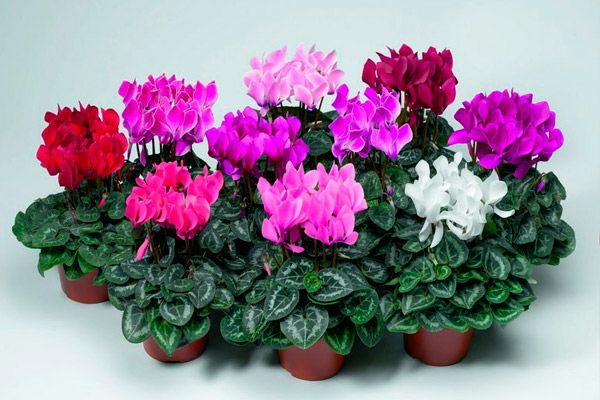
The plant has underground tubers that contain toxic cyclamines. The poisonous houseplant, after swallowing, causes an attack of nausea, vomiting and diarrhea, dizziness, convulsions. Cyclamen tubers are hidden by the ground, and thanks to this, we do not come into contact with them. It is necessary to be careful when transplanting or dividing tubers. When working with this flower, it is necessary to wear gloves and not touch your face and mouth.
Cyclamen tubers have long been used to treat sinusitis. It also helps fight gastrointestinal diseases, as well as various neuralgias.
Poinsettia (Star of Bethlehem). A member of the genus Euphorbia, which is known to be poisonous. This is due to the fact that they contain juice containing euphorbic acid and cyanogenic compounds that burn the skin, causing dermatitis. Avoid contact with eyes, because they can temporarily blind a person. The plant's juice in the roots, leaves and stems is poisonous.
You need to know that people come into contact with plants that are poisonous every day, often without knowing it. Many medicinal and ornamental plants are widely used in cooking as a seasoning and are the most poisonous plants. For example, poppy. But you rarely hear of anyone actually being poisoned by them.
This is because the toxic substances are found in non-edible parts such as stems, roots or leaves, or lose their harmful properties after drying or cooking.
In fact, poinsettia is toxic only when damaged, because the damaged parts of the plant begin to secrete sap, causing adverse reactions such as irritation or dermatitis. This is why you should be especially careful with your children, who may unknowingly bite the plant. There is no need to worry that simply touching the leaves or flowers of the poinsettia will have consequences. However, there are known cases of poisoning from this beautiful plant. The most susceptible may be people with allergies, children and animals, who may experience unwanted consequences.
The skin of people prone to allergic reactions reacts immediately to contact with the poisonous juice. Therefore, after caring for the poinsettia, it is always necessary to thoroughly wash your hands with plenty of water. If someone from your circle has eaten the milkweed, you need to give them an emetic, stomach drops, or better yet, go to the doctor to make sure everything is okay.
Typical symptoms of poisoning are reddening of the skin, skin ulcers, dermatitis, allergy, asthma attack. In case of ingestion - abdominal pain, vomiting, fever, malaise.
Deadly poisonous plants
Adenium is a type of plant in the dogbane family. Many species are poisonous. The stems, leaves, and roots contain a very poisonous milky sap. It is used to make poison darts. You must be very careful when handling this deadly poisonous plant, especially if you have cuts or abrasions on your hands.
Oleander. The beauty of blooming oleanders is mesmerizing. A very popular plant in our homes. It reaches significant sizes and abundant flowering. Despite the fact that it grows in Southern Europe, it can be grown without any problems at home. Its flowers are of various shades - white, pink, red, yellow, beige.
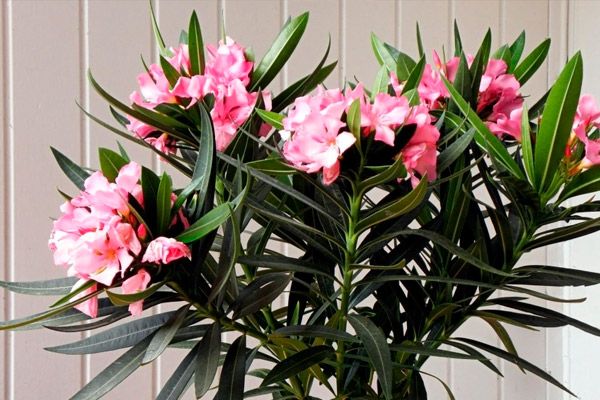
This is a deadly poisonous plant. Its leaves taste very bitter. An adult can die after eating 4 g of oleander leaves, but for a child, even one leaf can be fatal. The first symptoms of oleander poisoning appear quite quickly. These include vomiting, bloody diarrhea, chills throughout the body, loss of consciousness and coma. The poison affects the heart directly, causing arrhythmia, heart attack and heart paralysis.
There is a legend that at the beginning of the nineteenth century Napoleon's troops were passing through Spain to take Madrid. At one of their halts they caught a lamb and wanted to cook it over a fire. The soldiers lit a fire and put some branches from a nearby bush, not knowing that it was oleander. After dinner they suddenly had cramps, severe diarrhea and chills. Many of them died, and those who survived suffered from poisoning for a long time. After this incident Napoleon forbade his soldiers to touch oleander.
Datura. A herbaceous plant of the nightshade family. It is valued for its beautiful trumpet-shaped flowers. It is often grown indoors. During the summer, these plants decorate balconies and terraces, and in winter they are kept indoors, protected from frost.
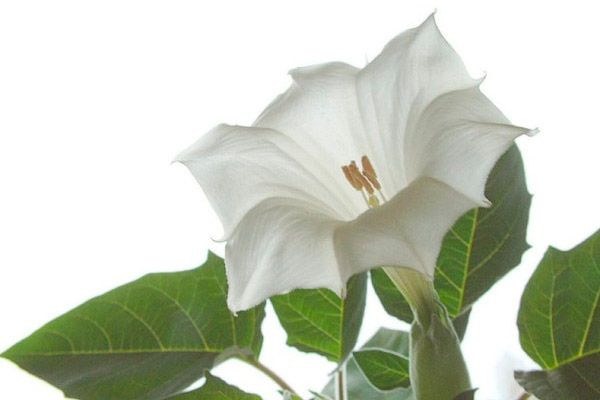
It is highly toxic and hallucinogenic. Dried datura leaves are dark green and have a characteristic, intoxicating, unpleasant smell.
The hallucinogenic and poisonous properties of this plant were already known in ancient times, as indicated by records from the time of the Roman Empire. Severe and fatal poisonings associated with its use. Datura seeds and grass were also used for the insidious murder of unwanted contenders for power, wealth and glory, as well as political opponents.
The composition of this deadly poisonous plant:
- alkaloids such as scopolamine, atropine, glucoside scopoletin;
- tannins;
- flavonoids;
- traces of oil with a smell similar to tobacco;
- meteloidin and cuscochigrin.
On average, 1 gram of datura seeds contains about 2-4 mg of alkaloids.
Hallucinogenic and toxic effects are associated with the presence of alkaloids in its composition. They block certain parasympathetic receptors.
The highly toxic effect affects, in particular, the respiratory center, and has a calming effect on the peripheral nervous system, causing drowsiness and amnesia.
The average lethal dose contained in the plant scopolamine is 0.1-0.2 grams. But there have been cases of survival after oral administration of even 0.3-0.5 grams of dose. This is due to individual sensitivity to scopolamine.
A derivative of the substance - butylbromide hyoscine is used in medicine: to reduce the contraction of smooth muscles of the gastrointestinal tract and contractions of the pylorus, bile and urinary tract; spastic constipation, to check for obstruction of the fallopian tubes and radiological diagnostics of the esophagus, stomach, duodenum and urinary tract; in the preparation of drugs for anesthesia.
Datura can be used in preparations for convulsions, neuralgia, rheumatism and as a remedy for cough and renal colic. Experts do not recommend using the deadly poisonous plant and preparations made from it due to insufficiently proven effectiveness.
Thus, datura preparations were withdrawn from use.
Poisoning by deadly poisonous plants is a very common problem. It differs from the poison of other plants containing alkaloids in that it can cause fits of rage, madness or acute psychosis, which are the result of severe psychomotor agitation.
The phase of excitement is followed by a state of lethargic sleep, relaxation and increased sleepiness, which can be very deep.
In case of treatment of intoxication from datura, gastric lavage is performed, sodium sulfate preparations and activated carbon are administered. In addition, it is necessary to replenish the deficit of fluid and electrolytes. Due to the tendency to urinary retention, the patient is usually given a catheter.
In each case, drug treatment is also necessary. Pilocarpine, which stimulates the parasympathetic nervous system, is administered as an antidote. In severe cases of respiratory depression, the patient undergoes intubation.
Datura poisoning is the result of both intentional and accidental use. The biggest problem is that young people deliberately use datura for psychedelic experiments, not realizing that they can end tragically.
Poisonous Houseplants for Cats
Often pet owners do not realize that such an innocent thing as a potted houseplant or a flower in a vase can be deadly to their pets. Cats love to chew all available parts of plants. Some of them do it very rarely, unnoticed by the owner. The insidiousness of plant toxins is that they often do not cause any symptoms. Everything looks normal, the cat feels fine, but suddenly its condition begins to deteriorate sharply and when visiting a doctor, it turns out that the unfortunate animal has irreversibly damaged its kidneys or liver. Other plants can cause serious burns to the mouth and gastrointestinal tract.
Most often, young cats, who are interested in everything that surrounds them, suffer from poisoning from poisonous indoor plants. Many pets do not show any interest in plants at all and for many years live peacefully in winter gardens or apartments that are filled with flowers and shrubs.
However, we can reduce the likelihood of poisoning to a minimum by refusing to keep certain ornamental plants in the house, usually those growing in pots and most tempting to the cat.
Therefore - having decided to take a new family member under our care - we must do everything necessary to rid the house of poisonous houseplants for cats. We also need to keep an eye on cut flowers in vases, they may also contain toxins. You cannot say with complete certainty that a cat who has never been interested in plants in the presence of the owner will not want to bite them. This can cost him dearly - cost him his life.
The most common symptoms of poisoning from poisonous houseplants for cats are:
- uncontrollable vomiting;
- diarrhea;
- lack of appetite;
- brighter than normal color of gums and tongue;
- swollen tongue;
- stomach ache;
- convulsions.
Poisonous houseplants for cats include:
- Alocasia sp. Alocasia. The plant's juice is poisonous. It can cause swelling of the mouth and throat, and if it gets into the eyes, conjunctivitis and corneal damage develops.
- Aloe vera – aloe. The juice causes diarrhea if taken internally.
- Azalea sp. – azalea. The whole plant is toxic. When taken internally, cardiopulmonary insufficiency; vomiting; diarrhea may occur.
- Diffenbachia sp. – dieffenbachia. The plant juice contains oxalic acid. Causes swelling of the mucous membrane of the mouth and larynx in animals.
- Dracaena – dracaena. Causes swelling of the larynx.
- Geranium – geranium. Causes digestive upset. Red geranium is especially toxic.
- Hydragea sp. – hydrangea. The leaves of the plant contain cyanides, which are activated when interacting with water and saliva. Causes vomiting, diarrhea, tremors, problems with the heart, lungs and kidneys.
- Hedera helix sp. – ivy. It contains a substance that disrupts hematopoiesis. Causes vomiting, diarrhea, convulsions. Boston ivy can cause laryngeal edema.
- Peperomia – peperomia. It is dangerous because of swelling of the larynx. It causes loss of coordination and acute heart failure.
- Bukus - evergreen boxwood. Causes severe intoxication of the body, even with a fatal outcome.

